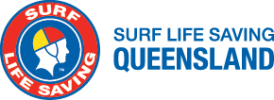Patrol members are required to assess the conditions that present to them and determine if closing the beach (aquatic area) is an appropriate option. The aim of this guideline is to assist in determining their options and acting upon their decisions in a safe and efficient manner.
If a club determines its beach is to be closed the minimum patrol strength outlined in the clubs Patrol Service Contract shall be maintained.
If an event is being conducted at the beach the patrol captain will advise the event organiser of the closure and specifics of closure. Internal or external events are not permitted to be conducted on closed beaches as per the local laws.
Patrol members should consider closing the beach at any time that there is an unacceptable risk to the public or the patrol of injury, illness, substantial distress or at any time that the patrol is over committed and/or is unable to effectively perform water safety tasks. The following are specific conditions under which beach closure may be considered (this list should not be considered exclusive):
Surf conditions:
- Heavily dumping surf;
- Large surf;
- Rips/strong currents
- Debris;
- Water quality
Marine life:
- Marine stingers;
- Sharks;
- Crocodiles
- Any other marine creatures that may be a hazard on the beach.
Human hazard:
- Uncontrolled surf craft infringements;
- Power craft hazards;
- Civil disturbance (public unrest, criminal activity)
- Equipment in surf/swimming area (lines, netting, buoys, etc.).
Weather:
- Lightning;
- Hail
- Cyclonic conditions.
Chemical hazard:
- High pollution levels;
- Chemical spill;
- Oil/petrol spills;
- Biological agent(s);
- Marine or water pollution;
Significantly reduced visibility:
- Low light levels;
- Heavy rain;
- Fog/mist.
Other:
- Dangerous objects such as ammunitions;
- Suspicious packages.
Should the prevailing conditions warrant the closing of a beach, the local laws or regulations of the relevant authority where applicable, are to be applied.
The Patrol Captain is to control the operation. Patrols should conduct the operation in a firm but courteous manner in a way that will not unduly alarm the public.
Informing the public should be an important consideration in the patrol’s activity, which includes:
- Advising aquatic users via public announcement systems or loud hailer;
- Posting “NO SWIMMING”/ “BEACH CLOSED” signs at identified beach access points;
- Post “BEACH CLOSED – SURF DANGEROUS”/“SWIMMING PROHIBITED” and/or specific warning (information) signs, e.g., stingers, pollution, shark, crocodile, etc.; and LS09 – Lifesaving Activities at Closed Beaches
- Maintain normal surveillance, preventative action and public advice activities during patrol hours.
The beach will remain closed until such time as the identified hazard is controlled or no longer presents a risk.
Report beach closure and reason to Surfcom via radio or phone and update on LIMSOC.
Recommended closure periods include:
- Crocodile – minimum 4hrs from last confirmed sighting and after consultation DES;
- Shark – minimum 60 minutes from last confirmed sighting or until the threat is no longer e.g., completion of search (Unless directed by authorities);
- Chemical hazards – after confirmation from appropriate authorities that the area is safe;
- Dangerous tropical jellyfish – until the following day and following two clear drags.
LSP001 – Adverse Weather Conditions – Lightning Procedure
Once it is determined that it is safe to reopen the beach, normal patrol procedures should be re-established under the direction of the senior responsible person. It is important to continue to inform the public of the patrol’s activities.
Upon the decision to close a beach:
- The red and yellow flags shall be removed/taken down;
- The red flag (if applicable) shall be erected;
- Where the swimming area would normally be, a “DANGER NO SWIMMING/ BEACH CLOSED” sign/s with a red flag and relevant hazard sign shall be erected;
- Report beach closure to SurfCom detailing the reason for closure where SurfCom is in operation;
- “DANGER NO SWIMMING ” approved best practice signage with red flag and hazard sign should be erected at major beach access points where practical and appropriate to advise the public of a closed beach. Refer to 35th Edition of SLSA Training Manual;
- Conditions boards shall be changed to outline the “Beach is Closed for swimming” and state the reason for closure;
- When the beach is closed, the minimum patrol strength outlined in your club’s patrol agreement shall be maintained. Patrol the beach, to ensure swimmers do not enter the water and be ready in case of emergency during normal patrol hours.
- Closure due to Marine Stinger – “DANGER NO SWIMMING”
NOTE: The patrol must update their LIMSOC status to closed and notify Surfcom as well.
NOTE: The practise of crossing the red and yellow flags is not recognised under any bathing by-laws or the Standards Australia. This method is not to be used.
NOTE: Suitable patrol shelter/shade be made available for patrol members that are maintaining surveillance of the closed beach.
NOTE: Further information can be found in the 35th Edition SLSA Training Manual, and Beach Patrol Signage Catalogue (Refer to Section 10 – Beach Patrol Equipment).



Post your comment on this topic.